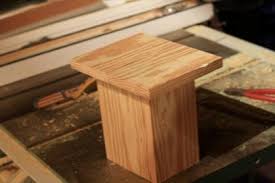How to Build a Box Trap: 13 Steps

Building a box trap is not only a useful skill for survival situations, but it can also be great for general wildlife observation or pest control. This step-by-step guide will teach you how to build a simple, yet effective, box trap.
1.Gather materials: For this project, you’ll need the following:
– A wooden plank or board measuring 2 feet by 4 feet
– Four wooden dowels or stakes about 18 inches long
– A small piece of plywood (around 2 feet by 2 feet)
– Nails or screws
– A saw
– Hammer and/or drill
– Strong string or wire
2.Cut the plank: Using your saw, cut the wooden plank into four equal pieces (each should be around 1 foot by 2 feet).
3.Assemble the frame: Align two of the cut planks in a “V” shape, and nail or screw them together at one end. Repeat with the other two planks to create an identical “V”.
4.Join the frame: Place the two “V” shapes opposite one another on a flat surface to form an open-ended box. Secure them by nailing or screwing each corner together.
5.Add stakes: Hammer one wooden dowel into each corner of the frame at an angle higher than 6 inches off the ground. These stakes will ultimately help support the trapdoor.
6.Cut out the door: Using your saw, cut a rectangle from your plywood that matches the dimensions of your box’s opening.
7.Install the door: The plywood rectangle will act as your trapdoor. Attach it to one end of your box using nails or screws so it can swing freely downward.
8. Pre-drill holes for string/wire attachment: Drill small holes near the top and bottom corners of your trapdoor, as well as in the middle of the top edge.
9.Attach the string/wire: Run your string or wire through the holes drilled in the trapdoor and attach it to the stakes at each corner. This will keep the door raised until an animal disturbs the trap.
10.Create a trigger mechanism: Tie a loop of string around one of the dowels and secure it with a slipknot. Attach another longer piece of string to this loop.
11.Add bait: In the bottom center of your box, place a small amount of bait that will attract your target animal.
12.Set the trap trigger: Arrange the longer piece of string from your trigger mechanism so it covers part of the bait. If an animal tries to take it, it will dislodge the slipknot and cause the door to fall shut.
13.Monitor your trap: Check your box trap regularly to see if you’ve caught anything. Remember, be patient and practice ethical trapping techniques by releasing any unintended catches safely.
With these 13 steps, you can now build your own box trap for various purposes. Good luck and happy trapping!






